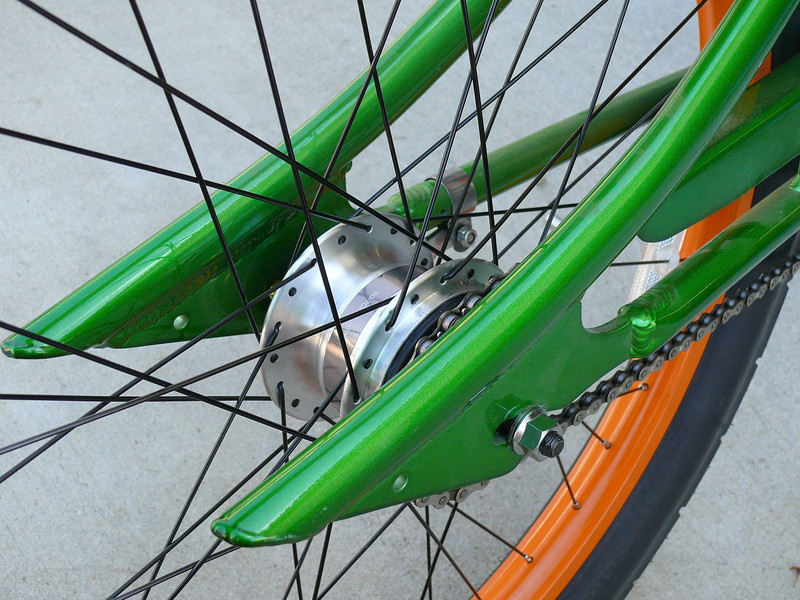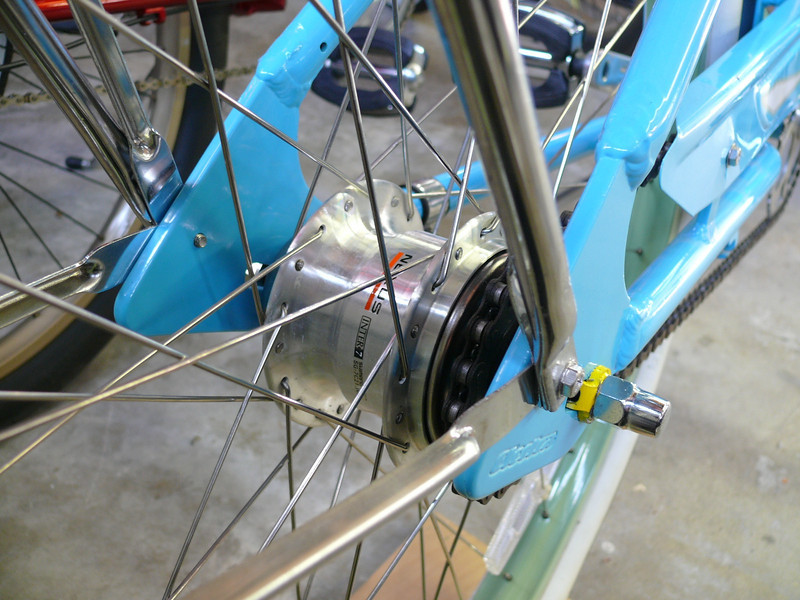I installed an Inter 7 on both my Rat Fink, and on my wife's Super Deluxe (both are aluminum). Both are spaced for Inter 3's (120mm), and the 7 is 130mm. I didn't permanently widen the dropout spacing, I simply "flex" the rear stays apart when mounting the wheel. If I pull the wheel off, the dropouts will snap back to their original spacing.
Aluminum has no "fatigue limit", so cold bending it will cause damage, but aluminum can also flex some before it reaches the point of bending. Just think how much the wings of an airplane will flex in flight, and they will last many, many years.
The purists will say "don't do it", but in the real world, I'm not worried about it and I feel my Rat Fink's frame will last my life time with the rear stays flexed (not bent) outward by a mere 5mm per side. Yours will be 6mm per side, depending on the "actual" spacing on your frame. It will just be a tiny bit of extra effort then removing or reinstalling your wheel, but you'll see it doesn't take much force at all to flex the stays wide enough to get the wheel on. Why don't you pop your wheel of and measure the spacing on your frame. You might find they naturally sit a little farther apart then 120. I was just doing some work on my 3i Townie, and while I had the back wheel off, I measured the dropout spacing, and it rests at 125mm.
We're talking about "Cruisers", after all, and not fancy ultra light weight thin walled road bikes, or mountain bikes, both of which will see much more frame stresses then our cruisers. Heck, maybe I'm totally wrong, and sometime in the near/far future, our frames will suffer a catastrophic failure, but oh well.....at least until then, both the wife and I will be reaping the benefits of using a 7 over a 3.




































